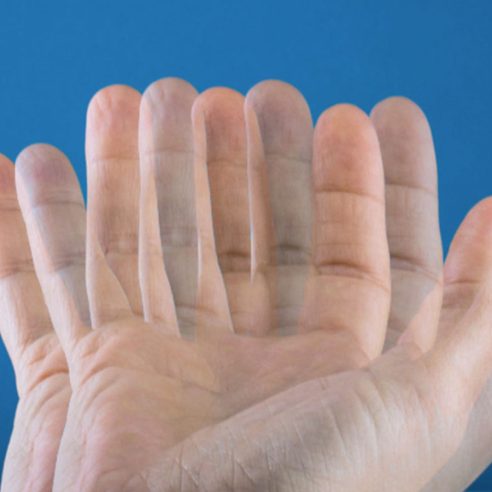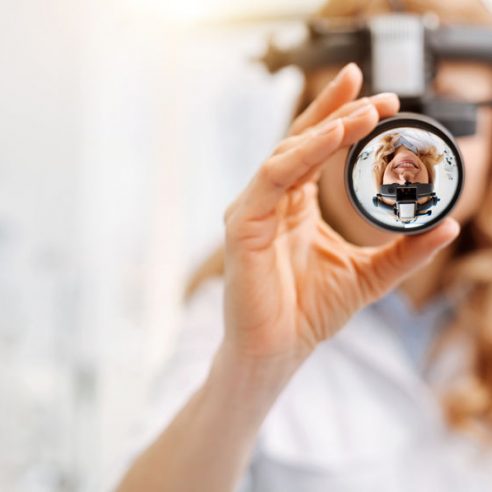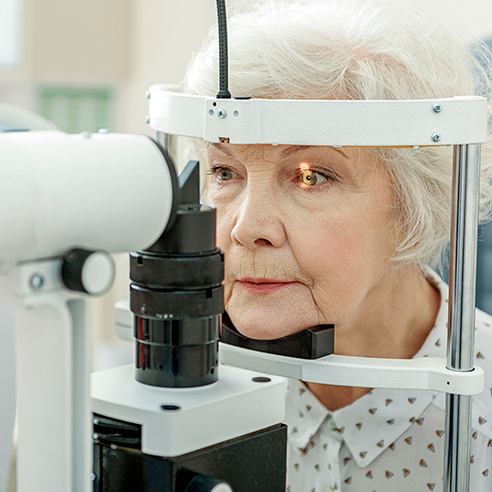
Strabismus in children and adults. Causes and treatment
Strabismus, also known as “crossed-eyes” or “crossed vision”, is an ophthalmological disorder in which the visual axis of the eyes is not aligned. This causes one eye to deviate when it needs to look at a fixed point.
As a rule, this disease is observed from early life. Studies show that about 5% of children born in one year have strabismus, and 50% of them may suffer from low vision or lazy eye. Regular ophthalmological examinations are essential to detect and treat strabismus as far as possible.
What is strabismus?
Strabismus is a disease that affects binocular vision.
It can manifest:
- In one eye
- In both eyes
- Constant
- Intermittent
*Note: Although strabismus can only occur in one eye, complex processes in the brain areas often make the disorder visible and affect both eyes.
About eye muscles
The eye moves thanks to the 6 torsion muscles in the eyeball.
- 2 horizontal
- 2 vertical
- 2 obliques
They coordinate all eye movements as part of complex processes in the central nervous system. The functioning of the extraocular muscles is developed in the first months of life, and in order to orient the direction of gaze correctly, they must all be in absolute synchrony. Strabismus involves a lack of harmonious functioning between them.

What causes strabismus?
The causes of strabismus can be multiple. It usually occurs in childhood due to genetic abnormalities, but there is a risk that it can also develop in adulthood as a consequence of other disorders.
- In principle, strabismus is caused by heredity. In 80% of cases, strabismus is inherited if there is astigmatism, myopia or hypermetropia in the family. However, there are also cases where the disorder occurs in children even if there is no history of refractive errors, but there are other vision problems.
- Failure to develop stable connections in the brain is a cause of congenital strabismus or infantile strabismus.
- Diseases affecting the nervous system can cause strabismus.
- Cranial nerve paresis and paralysis
- Brain tumors
- Head trauma
- Neonatal neurological history, such as dysmaturity, prematurity, cerebral palsy, or meningitis.
- High diopters can also cause this disease.
- Big differences in diopters between the two eyes can lead to this.
- Severe myopia can cause “heavy eye syndrome” – a certain type of strabismus.
- High hypermetropia is mostly associated with convergent strabismus.
- Congenital changes in the orbital bones can also cause strabismus. One example is Crouzon disease.
- Trauma to orbital structures can lead to strabismus.
- So do orbital tumors
- Congenital abnormalities of the extraocular muscles, or infection and inflammation of the extraocular muscles can trigger strabismus.
- Thyroid diseases, such as Graves, or other autoimmune thyroid disorders.
- Autoimmune diseases: multiple sclerosis, mitochondrial disease, myasthenia gravis.
- Accidental injury to the extraocular muscles by injecting various substances into the eye socket. In this case, strabismus is accompanied by double vision after local anesthesia for various ophthalmological surgeries: glaucoma, retinal detachment, etc.
- Cataracts and unilateral ptosis, also known as “drooping eyelid”, can cause strabismus because they reduce the visual acuity of one or both eyes.
- Ageing may be another factor that favors strabismus.
- Long time spent in front of screens at close range.
How many types of strabismus are there?
Ophthalmic disorder can manifest itself in several ways.
- Depending on the orientation of the gaze, it can be:
- Convergent strabismus/esotropia, where the eye looks towards the nose (inward)
- Divergent strabismus/exotropia, where the eye looks towards the ear (outward)
- Hypertropia, where the eye is deviated upward
- Hypotropia, where the orientation is downward.
- Depending on intensity:
- Low Strabismus – in these cases, the disease is noticed when the patient is tired. The rest of the time, they manage to control it and their binocular vision functions optimally.
- High strabismus – here, the patient’s eyes are already out of alignment and suffer from diplopia (double binocular vision). The angle of deviation between the eyes means that the image is no longer perceived as single in the brain, resulting in overlapping.
- Depending on the age at which it appears:
- Infantile/congenital strabismus. It occurs in infants in the first 6 months of life.
- Acquired strabismus. It can occur at any time and is caused by one (or more) of the causes listed in the previous section. As a rule, it also becomes apparent in childhood, between the ages of 2 and 6.
- Depending on frequency:
- Constant strabismus
- Intermittent strabismus
- Other classifications:
- Monocular Strabismus VS. Alternating strabismus
- Paralytic Strabismus VS. Restrictive strabismus
Strabismus in children
The first 6 months of a baby’s life are perceived as a period of physiological instability, when it is considered normal for the infant’s eyes to deviate from their normal position. These cases of strabismus are intermittent and usually facing outward (divergent strabismus). After the age of 6 months, the infant’s gaze should remain stable and parallel. If not, specialist intervention is needed to treat the strabismus according to its severity.
The parent should constantly observe the child’s progress in this regard, as late detection of strabismus can lead to severe amblyopia (poor performance of one/both eyes). Moreover, “crossed-vision” can be a symptom of other diseases such as retinal or nerve damage, ocular tumors, congenital cataracts and malformations.
As a treatment for the children, there are various therapies or treatments such as VTS therapy and strabismus surgery. Following examination, surgery may be recommended until the infant is 24 months old. Thereafter, it may be repeated, as vision and extraocular muscles continue to develop until the age of 18.
Strabismus in adults
In adults, acquired strabismus can have different causes.
- They are usually pathological in nature – oculo-motor paralysis caused by neuro-muscular diseases, traumatic brain injury, ocular or intracranial tumors, or strokes.
- However, there is also a high risk of illness with ageing. This type of strabismus usually manifests itself by double vision. Because they have had normal binocular vision in the past, patients manage to ignore one of the images by closing one eye or looking for a position to overlap them.
- Adults may also experience residual strabismus (operated on but not completely corrected) or consecutive strabismus (which has changed its appearance after surgery).
There are several treatment options for adults suffering from strabismus.
- Low severity strabismus can be corrected with prism glasses.
- For small or intermittent deviations, botulinum toxin is used. It is also useful in cases of paralysis of the extraocular muscles, and if the patient has had several unsuccessful surgeries.
- If the patient is experiencing a severe form, more surgery may be needed, especially if the strabismus has occurred under the age of 1 year and is accompanied by severe amblyopia.
How is strabismus diagnosed?
It is a complex process that involves:
- Hereditary history check
- Examination of eyeball movements
- Eye opacity check
- Angle of deviation measurement
- Performing a prism test

How is strabismus treated?
How strabismus is treated differs, depending on the form of the disease and the age of the patient.
- If it is a mild form associated with a refractive error, glasses (with diopters corresponding to the refractive error) with prism lenses, which force the eye to stay straight, are recommended.
- In the case of strabismus and “lazy eye” syndrome, unilateral or alternate occlusion (to restore vision to the weak eye), wearing glasses and orthoptic exercises (to stimulate binocular vision; can be done in specialist clinics or at home under specialist guidance) are indicated.
- In severe forms, where the angle of deviation exceeds the physiological limit, surgical treatment is recommended.
If you are facing an ophthalmological problem, the specialists at Dr. Holhoș clinics are waiting for you with state-of-the-art technologies to provide you with the best care.





































